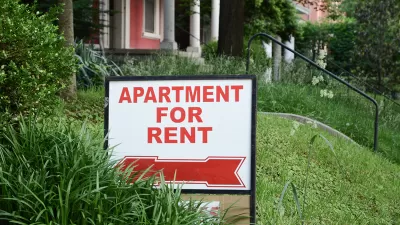Despite an all-out effort by the housing industry to stop them, two rent stabilization initiatives were given the green light following this month’s election.

Tenants won big in Minneapolis and St. Paul after ballot initiatives on rent stabilization passed by comfortable margins on Election Day.
In Minneapolis, voters approved a change to the city charter to allow the council to consider and enact rent stabilization. Minnesota, like many states, restricts the ability of local governments to consider and enact rent controls. Approval of the voters was necessary to allow the council to move forward.
In St. Paul, voters ratified a rent stabilization program designed by advocates, thereby skipping the step of city council deliberation and enactment. The St. Paul program will take effect in May 2022.
The two initiatives won despite an all-out effort by the housing industry to stop them. The industry raised and spent more than $4 million on a barrage of misleading and alarmist advertisements, promoted through mainstream media, social media, and mailings. Glossy mailers filled mailboxes in both cities proclaiming that “the experts” agree: rent control is a failed policy. But, in fact, the experts do not agree on that at all. The moderate forms of rent stabilization enacted in most U.S. cities have changed the conversation about rent regulations. Research bears out the assertion that the kinds of rent stabilization we have passed produce outcomes that are a far cry from the horror stories pushed by economists and industry representatives.
The St. Paul proposal was especially vulnerable to the scare tactics employed by opponents because it contains two features that are not common in moderate forms of rent stabilization. First, the amount by which a landlord can increase rent each year is not tied to inflation but instead is set at a flat 3 percent. Critics argued that this could seriously harm revenues, and in turn harm building upkeep, in periods of higher inflation. Supporters pointed to research showing that for most of the past 20 years in the Twin Cities, median rent increases and the rate of inflation were actually below 3 percent.
The second feature of the St. Paul program that opponents attacked was the fact that it does not exempt new construction. Opponents predicted that the program would thus kill new residential construction in the city. Advocates maintained that new construction was likely to continue since developers and owners remain free to set initial rents as high as they want them. Unlike most rent stabilization laws in this country, St. Paul’s also does not exempt rentals in single family housing or other small—2- to 4-unit—buildings.
In Minneapolis, because voters were not approving a specific program but rather simply granting ...
FULL STORY: Minneapolis, St. Paul Voters Say ‘Yes’ to Rent Stabilization

Alabama: Trump Terminates Settlements for Black Communities Harmed By Raw Sewage
Trump deemed the landmark civil rights agreement “illegal DEI and environmental justice policy.”

Study: Maui’s Plan to Convert Vacation Rentals to Long-Term Housing Could Cause Nearly $1 Billion Economic Loss
The plan would reduce visitor accommodation by 25% resulting in 1,900 jobs lost.

Why Should We Subsidize Public Transportation?
Many public transit agencies face financial stress due to rising costs, declining fare revenue, and declining subsidies. Transit advocates must provide a strong business case for increasing public transit funding.

Paris Bike Boom Leads to Steep Drop in Air Pollution
The French city’s air quality has improved dramatically in the past 20 years, coinciding with a growth in cycling.

Why Housing Costs More to Build in California Than in Texas
Hard costs like labor and materials combined with ‘soft’ costs such as permitting make building in the San Francisco Bay Area almost three times as costly as in Texas cities.

San Diego County Sees a Rise in Urban Coyotes
San Diego County experiences a rise in urban coyotes, as sightings become prevalent throughout its urban neighbourhoods and surrounding areas.
Urban Design for Planners 1: Software Tools
This six-course series explores essential urban design concepts using open source software and equips planners with the tools they need to participate fully in the urban design process.
Planning for Universal Design
Learn the tools for implementing Universal Design in planning regulations.
Smith Gee Studio
Alamo Area Metropolitan Planning Organization
City of Santa Clarita
Institute for Housing and Urban Development Studies (IHS)
City of Grandview
Harvard GSD Executive Education
Toledo-Lucas County Plan Commissions
Salt Lake City
NYU Wagner Graduate School of Public Service





























